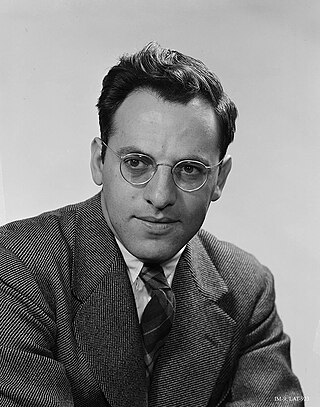
Frederick Reines was an American physicist. He was awarded the 1995 Nobel Prize in Physics for his co-detection of the neutrino with Clyde Cowan in the neutrino experiment. He may be the only scientist in history "so intimately associated with the discovery of an elementary particle and the subsequent thorough investigation of its fundamental properties."
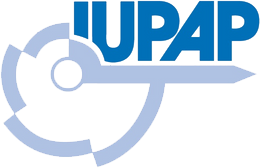
The International Union of Pure and Applied Physics is an international non-governmental organization whose mission is to assist in the worldwide development of physics, to foster international cooperation in physics, and to help in the application of physics toward solving problems of concern to humanity. It was established in 1922 and the first General Assembly was held in 1923 in Paris. The Union is domiciled in Geneva, Switzerland.
Reuven Ramaty (1937—2001) was a Hungarian astrophysicist who worked for 30 years at NASA's NASA Goddard Space Flight Centre. He was a leader in the fields of solar physics, gamma-ray line spectrometry, nuclear astrophysics, and low-energy cosmic rays. Ramaty was a founding member of NASA's High Energy Solar Spectroscopic Imager which has now been renamed the Reuven Ramaty High Energy Solar Spectroscopic Imager in his honour. This was the first space mission to be named after a NASA scientist and was operational from 2002 until 2018. The Online Archive of California holds over 400 entries for documents, papers and photographs published by and of Ramaty and his work. Ramaty made many contributions in the field of astrophysics and solar physics. He was given the Goddard Lindsay Award in 1980 and had a tribute dedicated to his work at the University of Maryland in 2000.

The Space Sciences Laboratory (SSL) is an Organized Research Unit (ORU) of the University of California, Berkeley. Founded in 1959, the laboratory is located in the Berkeley Hills above the university campus. It has developed and continues to develop many projects in the space sciences, including the search for extraterrestrial life (SETI@home). The laboratory have built instruments to fly on more than 100 satellites and flown more than 150 balloons to "measure electric fields, auroral x-rays, hard x-rays and gamma rays, cosmic rays and the cosmic microwave background." The lab has also built and flown two dozen rockets to measure "auroral particles, UV emissions, and solar flare nuclei." It currently has projects categorized into planetary projects, geospace projects, solar and heliophysics projects, astrophysics and exoplanets projects, which are accompanied by a missions operations system, an engineering division and an information lab.

Alexei Vladimir "Alex" Filippenko is an American astrophysicist and professor of astronomy at the University of California, Berkeley. Filippenko graduated from Dos Pueblos High School in Goleta, California. He received a Bachelor of Arts in physics from the University of California, Santa Barbara in 1979 and a Ph.D. in astronomy from the California Institute of Technology in 1984, where he was a Hertz Foundation Fellow. He was a postdoctoral Miller Fellow at Berkeley from 1984 to 1986 and was appointed to Berkeley's faculty in 1986. In 1996 and 2005, he was a Miller Research Professor, and he is currently a Senior Miller Fellow. His research focuses on supernovae and active galaxies at optical, ultraviolet, and near-infrared wavelengths, as well as on black holes, gamma-ray bursts, and the expansion of the Universe.
The International Cosmic Ray Conference, or ICRC, is a physics conference organized biennially by the Commission C4 of the International Union of Pure and Applied Physics (IUPAP) since 1947, where physicists from the whole world present the results of their research in Astroparticle Physics. The main topics of Astroparticle Physics are
Robert Peichung Lin was a Chinese-born American astrophysicist. He was a professor and director of the Space Sciences Laboratory (1998–2008) at the University of California, Berkeley. As a pioneer of gamma-ray astronomy and of particle detection in space, his research was fundamental to the development of our knowledge in solar physics, the physics of the solar wind and of the magnetosphere. He was the principal investigator for the Reuven Ramaty High Energy Solar Spectroscopic Imager.
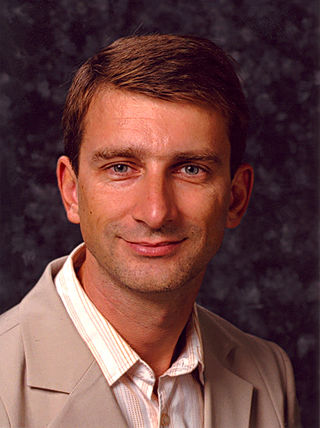
Uroš Seljak is a Slovenian cosmologist and a professor of astronomy and physics at University of California, Berkeley. He is particularly well-known for his research in cosmology and approximate Bayesian statistical methods.
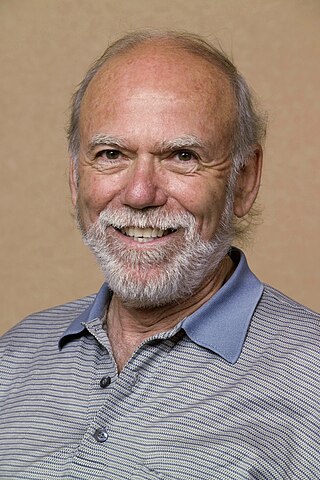
Barry Clark Barish is an American experimental physicist and Nobel Laureate. He is a Linde Professor of Physics, emeritus at California Institute of Technology and a leading expert on gravitational waves.
Werner Hofmann is a German professor of physics. He is director of the Max Planck Institute for Nuclear Physics in Heidelberg.

Brian Gregory Keating is an American cosmologist. He works on observations of the cosmic microwave background, leading the POLARBEAR2 and Simons Array experiments. He also conceived the first BICEP experiment. He received his PhD in 2000, and is a distinguished professor of physics at University of California, San Diego, since 2019. He is the author of two books, Losing The Nobel Prize and Into the Impossible.

Vassiliki Kalogera is a Greek astrophysicist. She is a professor at Northwestern University and the director of the Center for Interdisciplinary Exploration and Research in Astrophysics (CIERA). She is a leading member of the LIGO Collaboration that observed gravitational waves in 2015.

Jitendranath Goswami is an Indian scientist from Jorhat, Assam. He was the chief scientist of Chandrayaan-1, and was also the developer of this project. He served as a director of Physical Research Laboratory situated at Ahmadabad, Gujarat. He was also associated with Chandrayaan-2 and Mangalyaan.
Gaurang Yodh was an Indian-American physicist and an expert in astroparticle physics and cosmic-ray physics. He earned his B.Sc. at the University of Bombay in 1948 and his Ph.D. in physics at the University of Chicago in 1955. During his career, he held appointments at Stanford University, Carnegie-Mellon University, and the University of Maryland, before joining the faculty at the University of California, Irvine in 1988. Yodh was a Fellow of the American Physical Society and an Elected Fellow of the American Association for the Advancement of Science.
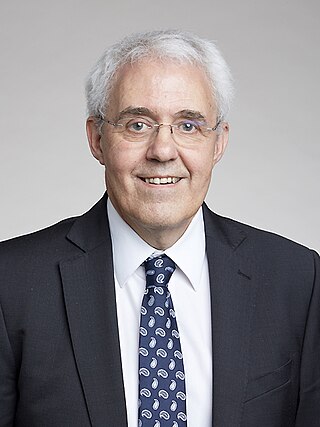
Anthony Raymond Bell is a British physicist. He is a professor of physics at the University of Oxford and the Rutherford Appleton Laboratory. He is a senior research fellow at Somerville College, Oxford.
Francis Louis Halzen is a Belgian particle physicist. He is the Hilldale and Gregory Breit Distinguished Professor at the University of Wisconsin–Madison and Director of its Institute for Elementary Particle Physics. Halzen is the Principal Investigator of the IceCube Neutrino Observatory at the Amundsen–Scott South Pole Station in Antarctica, the world's largest neutrino detector which has been operational since 2010.
Brenda Lynn Dingus is an American particle astrophysicist at the Los Alamos National Laboratory, known for her research on gamma-ray bursts and cosmic rays.
Arjun Gaurang Yodh is an American physicist. He is the James M. Skinner Professor of Science at the University of Pennsylvania and former Director of the Laboratory for Research on the Structure of Matter.
Alexander Michael Hillas (June 1932 – 26 November 2017) was an English cosmic ray physicist. He is known for the Gaisser–Hillas function, the Hillas parameters, and MOCCA, a Monte Carlo computer code used for simulation of extensive air showers (EASs) in the energy range from 1012 (tera-) eV to 1021 (zetta-) eV.









